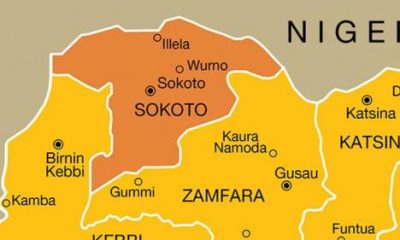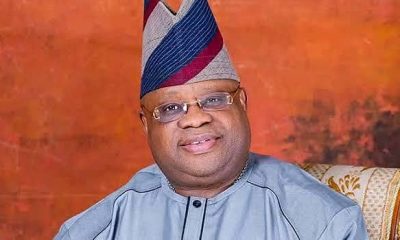News
Heavy Debt, Inefficient IGR: How Osun Fiscal Sustainability Sunk

By Ibrahim Sarafa
For sometime, there had been arguments on the possible impact the ‘humongous’ debt stock of Osun state would borne on future financial derivation for the state– a situation critics of the Governor Rauf Aregbesola-led government alarmed will caused untold hardship.
While the All Progressives Congress (APC) have been consistent in dismissing this line of thought, it is yet to adequately engaged the doubts agitating the minds of most citizens in the state.
Recently, a data released by the National Bureau of Statistics (NBS) painted an uninspiring outlook of the state’s financial worth when it showed that between January-July, 2017, Osun state serviced its debts with N16.91bn from the N21.34bn it received as allocation, leaving it with N4.43bn to cater for its over 4m population within that period.
Opposition parties, especially the Peoples Democratic Party (PDP) have lashed at this disclosure, which it alarmed put the economic condition of the state in a precarious edge– a claim the APC-led government in the state have faulted as lacking economic understanding.
But as that argument is still on, a new report by BudgIT, a civil society organisation, put Osun at the bottom of the log of states that is fiscally sustainable in this year.
According to the document titled ‘State of State 2017’ launched by the government accountability watchdog on Thursday and released to the public on Friday, Osun is enmeshed in a troubling economic situation– a development which it believed was an outcome of its inability to meet its recurrent expenditure obligations, heavy indebtedness and inefficient internally generated revenue mechanism.
“The effect of huge debt supported by ISPOs is already eating deep into the account of Lagos, Cross River and Osun states. Osun’s net allocation is even in the negative terrain, which invariably puts more pressure on future revenue,” BudgIT report revealed.
“Also, the index looks at the ability of states to sustainably manage their debt profiles. The index tries to see the extent to which today’s revenue can service outstanding debts. Anambra and Yobe top the index.
“Osun trails the overall index. The state’s inability to meet its recurrent expenditure obligations, its heavy debt profile and inefficiency in the collection of internally generated revenue weighed seriously on the state.”
As things stand, the state government have been battling with payment of salaries and pensions, so also is the weight of repayment of debt which is spread to 20 years, is by far telling on the economic worth of the state.
Though, the government on its website (www.Osun.gov.ng) claimed improvement in its internally generated revenue, which it said rose from N300 million to N1.5 billion on monthly basis since Mr. Aregbesola assumed office, but that figure didn’t match with what the NBS declared for the state from that source.
For instance, the NBS recorded N8.88 billion as internally generated revenue for Osun in 2016– a 10% increase from early year earning of N8.07 billion.
This clearly fall short from the expected N18 billion if indeed, the internally generated revenue of the state had surged to N1.5 billion monthly.
With the inconsistencies in the amount realised from IGR, the state which has debt obligations that is stretched to 20 years and an increasingly frustrated workforce over unconventional payment plan, is considered to be having ‘huge’ consequence on its economic outlook.
-

 News5 days ago
News5 days agoOsun 2026: Action Alliance Elects Farinloye As Governorship Candidate, Pledges People-Centred Governance
-

 News5 days ago
News5 days agoFRSC To Prosecute Peller After Crash
-

 News4 days ago
News4 days agoOsinbajo, Adeleke, Aregbesola Inaugurate N34bn UNIOSUN Medical Research And Training Hospital
-

 News5 days ago
News5 days agoMuftwang Sets To Defect To APC















